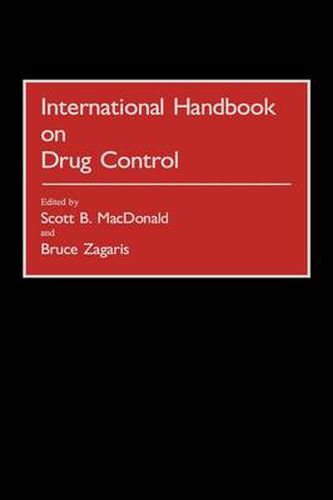Readings Newsletter
Become a Readings Member to make your shopping experience even easier.
Sign in or sign up for free!
You’re not far away from qualifying for FREE standard shipping within Australia
You’ve qualified for FREE standard shipping within Australia
The cart is loading…






This international handbook analyzes the status of drug control efforts around the world in a comprehensive manner with up-to-date information. Specialists provide a systematic overview of this major world problem in the 1980s and the 1990s, point to 10 major trends in current developments and to 3 probable shocks in the immediate future, and assess targets and networks for combatting the drug trade in the next decade. This handbook is a convenient reference for academicians, professionals, policymakers, and all who are concerned with this scourge on modern-day society. This survey of the major consumers and suppliers of drugs and of national and international responses and enforcement measures opens with an introduction that gives an overview of efforts to control the international drug problem. Money laundering and asset forfeiture problems and policies are described in some detail. Country and regional studies follow with analyses about the history and structure of the industry/trade, governmental and societal responses, international controls and networks. The work of the United Nations and regional organizations is summarized as well. Appendixes offer comparative data about drug consumption, production, and trade and about international legislature’s legal efforts to control the drug trade. Bibliographies at the ends of chapters and an essay at the end of the book offer suggestions for further research. A full index makes the reference an accessible one for researchers with different needs and perspectives.
$9.00 standard shipping within Australia
FREE standard shipping within Australia for orders over $100.00
Express & International shipping calculated at checkout
This international handbook analyzes the status of drug control efforts around the world in a comprehensive manner with up-to-date information. Specialists provide a systematic overview of this major world problem in the 1980s and the 1990s, point to 10 major trends in current developments and to 3 probable shocks in the immediate future, and assess targets and networks for combatting the drug trade in the next decade. This handbook is a convenient reference for academicians, professionals, policymakers, and all who are concerned with this scourge on modern-day society. This survey of the major consumers and suppliers of drugs and of national and international responses and enforcement measures opens with an introduction that gives an overview of efforts to control the international drug problem. Money laundering and asset forfeiture problems and policies are described in some detail. Country and regional studies follow with analyses about the history and structure of the industry/trade, governmental and societal responses, international controls and networks. The work of the United Nations and regional organizations is summarized as well. Appendixes offer comparative data about drug consumption, production, and trade and about international legislature’s legal efforts to control the drug trade. Bibliographies at the ends of chapters and an essay at the end of the book offer suggestions for further research. A full index makes the reference an accessible one for researchers with different needs and perspectives.